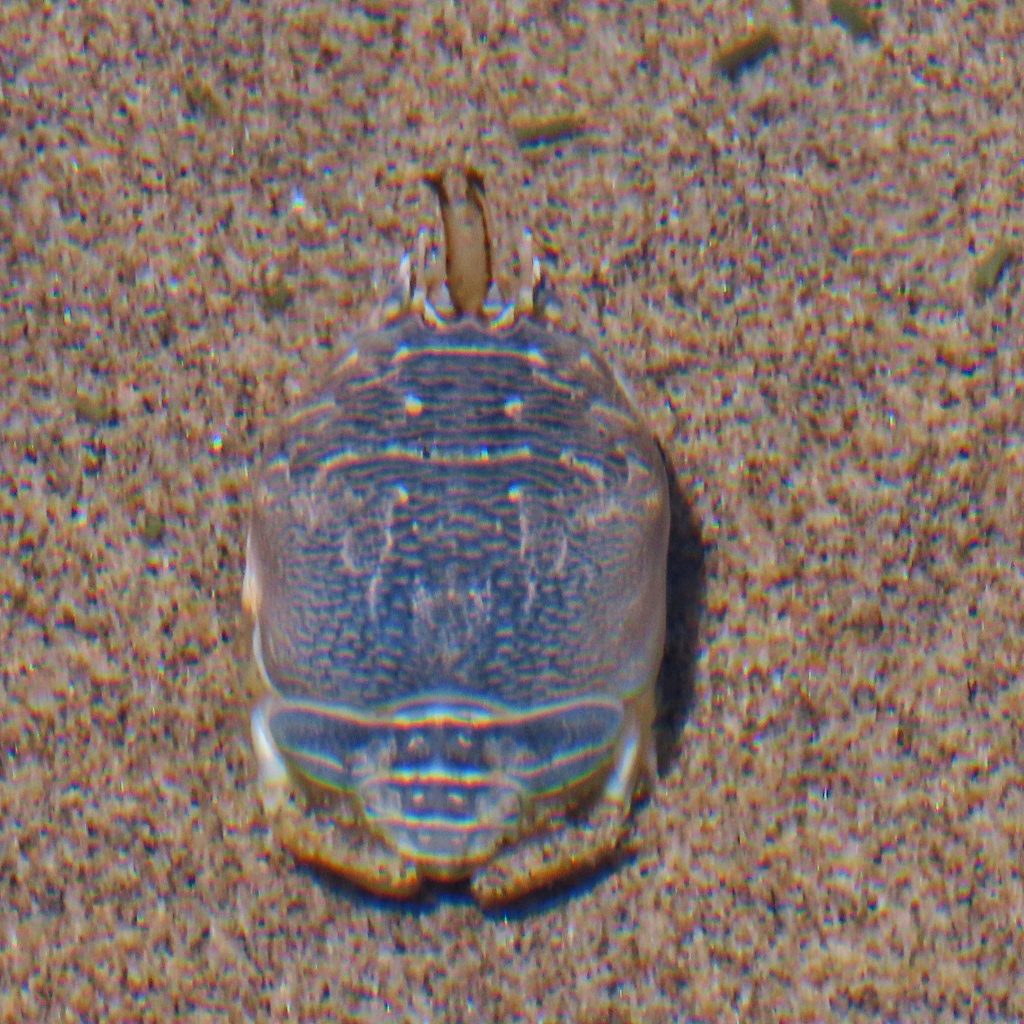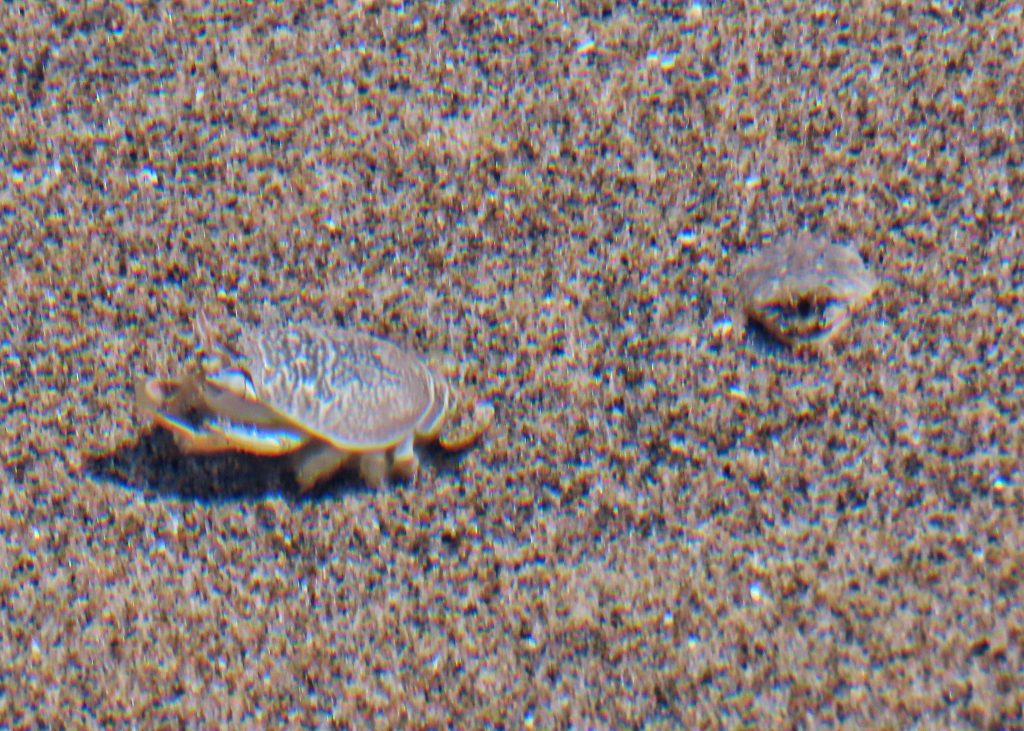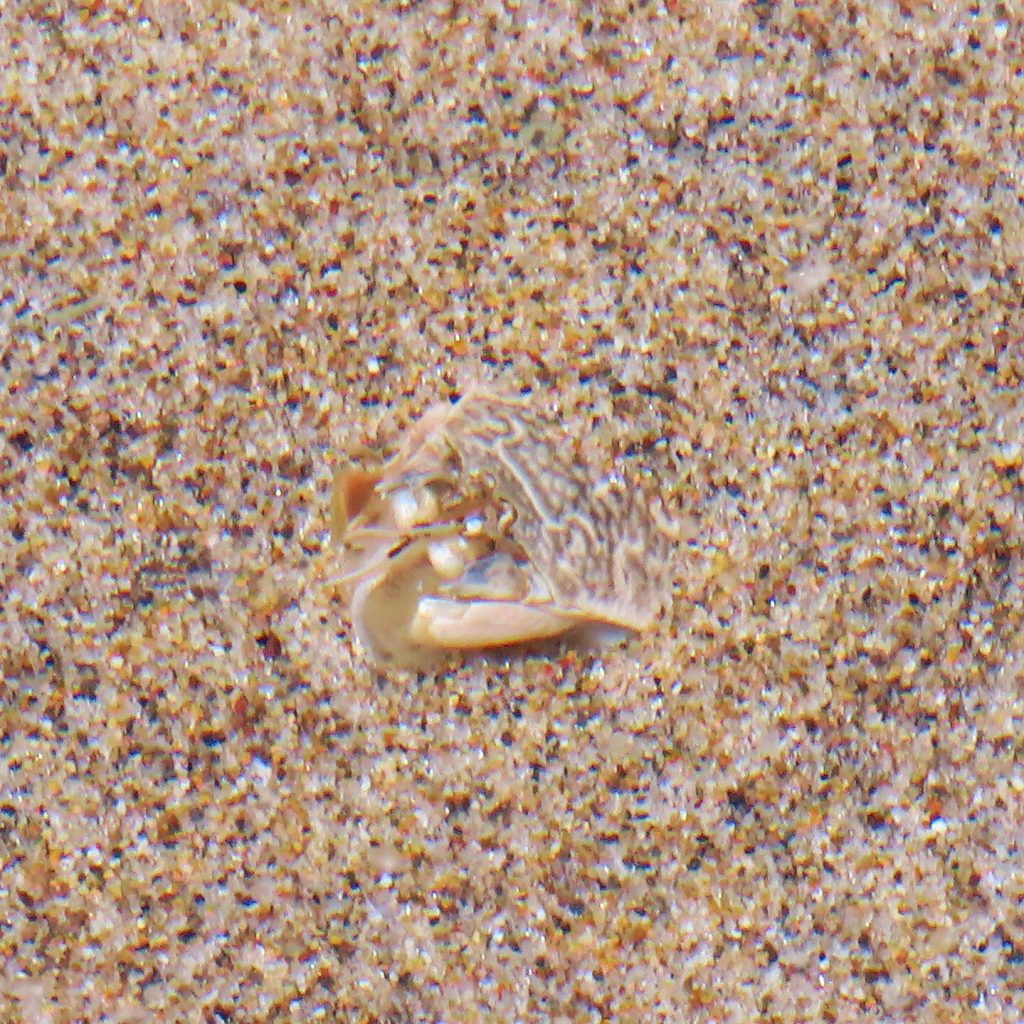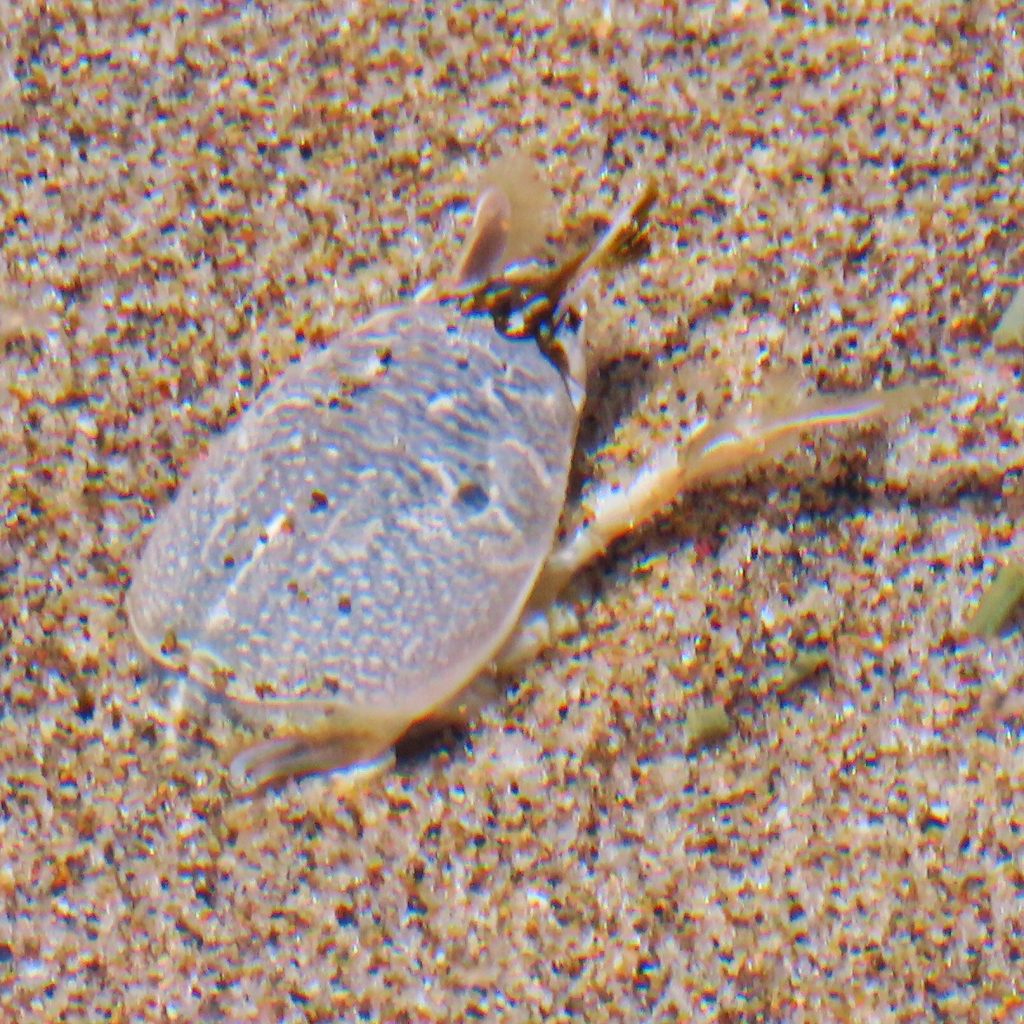
These crustaceans are found on sandy beaches in the swash zone of the intertidal region. They burrow backwards into the sand, extending their eyes, antennules (which form a tube to funnel water over the gills), and antennae, which filter plankton from the water as each wave passes overhead. They are in turn preyed upon by birds and fish, especially Surf Perch. One study found them to constitute 90% of the diet of Amphistichus argenteus (Barred Surf Perch).
They are found along the Pacific Coast from Baja to Alaska, although most populations north of California are temporary, the result of larvae riding the currents northward. There is however an established population in Grays Harbor, Washington, which may be the result of warmer waters or more consistent plankton availability.
Females can be significantly larger than males (40mm to 25mm), and may lay up to 45,000 eggs per month from February to October, which is the reason they are such an important food source. Larvae are planktonic and drift with the currents for 4 1/2 months, going through 8 to 11 larval stages. If currents are favorable they will find their way to a sandy beach, and when this happens they are known as recruits. Mole Crabs breed in both their first and second year, and most die in their second autumn.
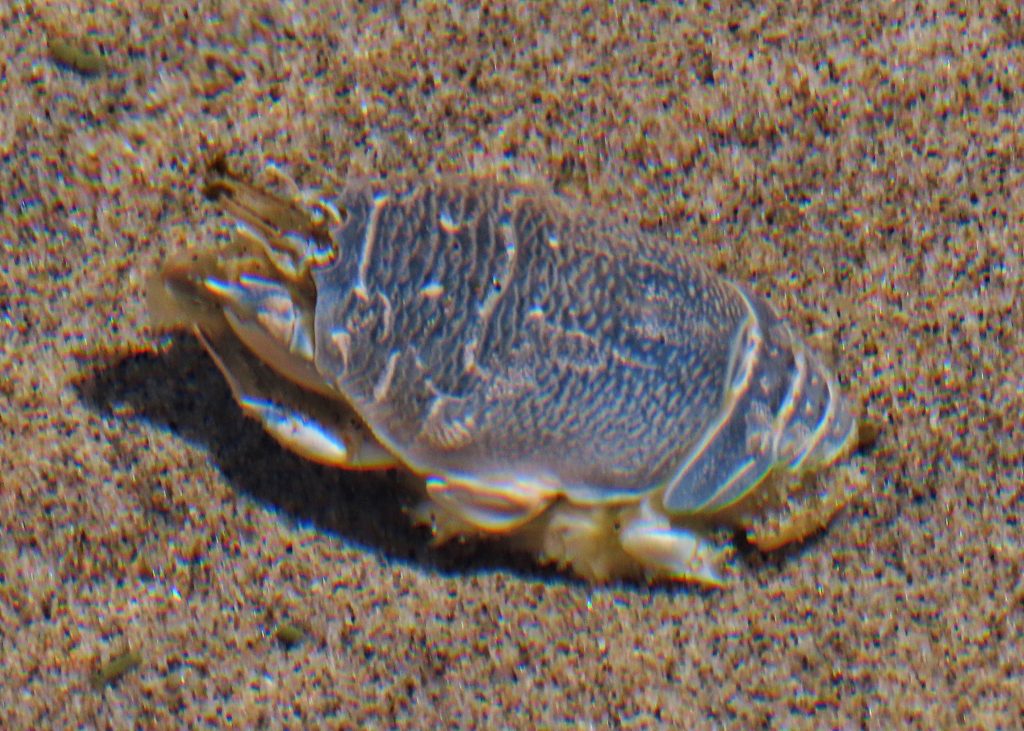
http://limpets.org/wp-content/uploads/2015/01/PacificMoleCrabFS_Oct2010.pdf
Mole Crabs: Creepy Critters Coming Soon to Oregon Coast Beach Near You
Size– Female-14-40mm; Male-10-25mm
Habitat– Swash zone of sandy marine beaches
Range– Baja to Alaska
Eats– Plankton, mostly dinoflagellates
Is eaten by– Birds, fish, Sea Otters
Breeding- February-October
Season– Year around, most common late spring to early fall
